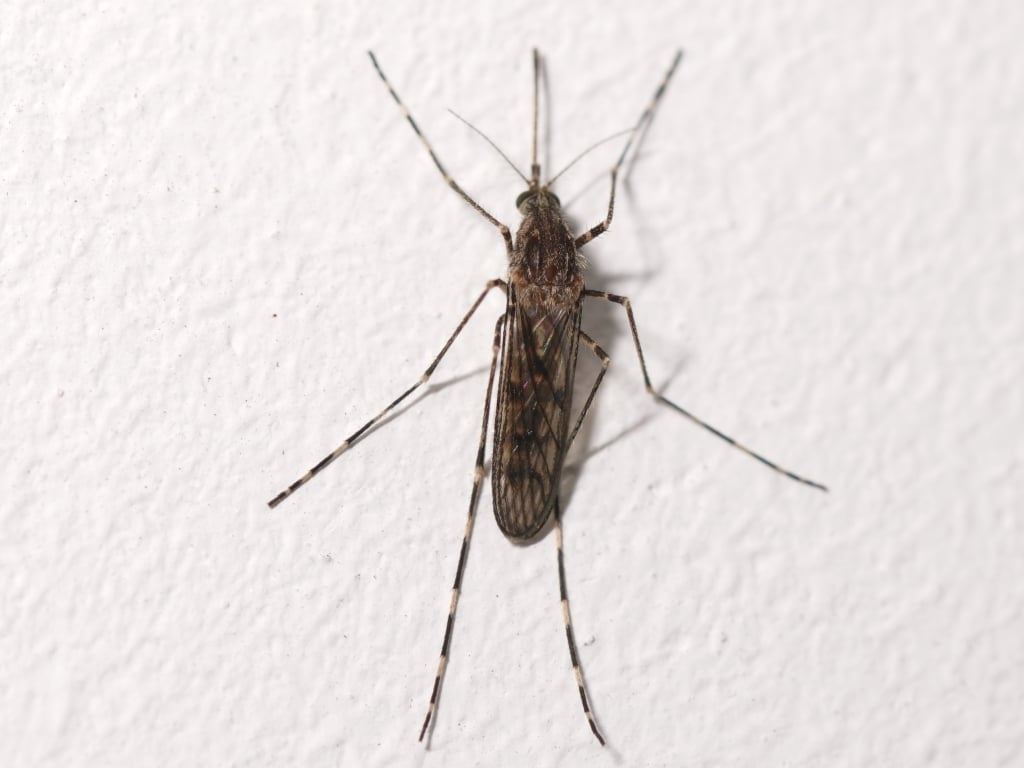
Culiseta annulata. Credit: AfroBrazilian / Wikimedia Commons / CC BY-SA 4.0
Iceland, one of the few remaining places on Earth without mosquitoes, has officially recorded the insects within its borders for the first time — a change researchers link to the Arctic’s rapidly warming climate.
The Icelandic Institute of Natural History confirmed Monday that three Culiseta annulata mosquitoes were discovered on a farm in Kjós, north of Reykjavík. The finding marks the first verified case of mosquitoes surviving naturally outdoors in the Nordic nation.
Discovery made by a citizen scientist
The insects were found earlier this month by insect enthusiast Björn Hjaltason, who first shared his discovery in a local Facebook group for bug enthusiasts. “At dusk on the evening of October 16th, I caught sight of a strange fly on a red wine ribbon,” Hjaltason said. “I immediately suspected what was going on and quickly collected the fly. It was a female.”
🚨 For the first time ever, mosquitoes have reached Iceland.
Mosquitos have been detected on Icelandic soil for the first time on record.
Up until this month, Iceland was one of the only places on the planet that didn’t have a mosquito population thanks to its inhospitable… pic.twitter.com/EgkCUSBc3u
— Massimo (@Rainmaker1973) October 22, 2025
He later trapped two more mosquitoes and handed them to authorities for testing. Laboratory results confirmed the three specimens — two females and one male — belonged to Culiseta annulata, a cold-tolerant species found widely across northern Europe.
Cold-tolerant species common in northern regions
Entomologist Matthías Alfreðsson from the Icelandic Institute of Natural History explained that the mosquitoes were caught from red wine ropes and used to attract moths. He noted that Culiseta annulata is the most common mosquito in the United Kingdom and thrives in cool climates.
According to the U.S. National Institutes of Health, the species inhabits much of the Palearctic region — stretching from northern Africa and Europe to Asia north of the Himalayas — and has also been introduced to Canada and the northern United States.
The mosquitoes often lay eggs in artificial containers such as buckets, barrels, and flowerpots, which helps them spread into new regions.
Researchers believe the Icelandic mosquitoes likely arrived by freight. While mosquitoes have occasionally been found on airplanes landing in Iceland, none had previously survived long enough to establish outdoors.
Warming climate reshaping Iceland’s ecology
The institute said the discovery is part of a broader pattern of new insect species appearing in Iceland in recent years, driven by global warming and increased international transport.
According to World Weather Attribution, Iceland is now warming at a rate up to four times faster than the rest of the Northern Hemisphere, creating conditions more suitable for insects once unable to survive there.
Until now, Iceland’s short summers and cold winters have kept mosquitoes from breeding. With this discovery, Antarctica is now believed to be the only place on Earth without mosquitoes.
A nuisance, not a threat to health
The Culiseta annulata mosquitoes are known to bite but are not carriers of diseases in northern regions, the institute said. A 2017 study described them as “a biting nuisance, rather than a deadly foe.”
Globally, mosquitoes remain the world’s deadliest animal. More than 3,000 species exist worldwide, and some transmit fatal illnesses such as malaria, dengue fever, and West Nile virus. The American Mosquito Control Association estimates over one million people die each year from mosquito-borne diseases.
A reminder of climate change’s reach
Experts say Hjaltason’s discovery highlights the growing role of citizen scientists in tracking ecological shifts. “This is another great example of the value of citizen scientists in detecting invasions of disease-spreading mosquito species in new area,” said Ryan Carney, a biologist at the University of South Florida.
The finding, researchers say, is both a scientific milestone and a warning — evidence that even the coldest corners of the planet are no longer untouched by climate change.